Recovering $114,000 is key to the upward trend, while falling below $108,000 may face deeper pressure.
Written by: Chris Beamish, CryptoVizArt, Glassnode
Translated by: AididiaoJP, Foresight News
Bitcoin's price is oscillating between $110,000 and $116,000, with profit-taking and weakened ETF inflows dragging down the upward momentum. The influence of derivatives is too great, with futures and options playing a balancing role in the market. Recovering $114,000 is key to the upward trend, while falling below $108,000 may face deeper pressure.
Summary
After retreating from the historical high in August, Bitcoin is currently still in the "gap" range of $110,000 to $116,000. The rebound from $107,000 has received support from dip buyers, but the selling pressure from short-term holders has so far limited the upward momentum.
Profit-taking from 3 to 6-month holders and loss realization from recent high buyers have created resistance. To maintain the rebound, the price needs to stabilize above $114,000 to rebuild confidence and attract inflows.
On-chain liquidity remains constructive but is on a downward trend. Meanwhile, ETF inflows have slowed to about ±500 BTC per day, weakening the traditional financial demand that previously drove the rise in March and December 2024.
With weak spot demand, derivatives have become the main driving force. The futures basis and trading volume remain balanced, while the open interest in options is rising, indicating a market structure with more risk characteristics.
The market is at a crossroads; recovering $114,000 could trigger new upward momentum, while falling below $108,000 may expose the next cluster's lower limit of about $93,000.
Range Oscillation
After reaching a historical high in mid-August, market momentum has continued to weaken, pulling Bitcoin below the cost basis of recent high buyers and back into the "gap" range of $110,000 to $116,000. Since then, the price has been fluctuating within this range, gradually filling the gap as supply is redistributed. The key question now is whether this is a healthy consolidation or the first phase of a deeper correction.
As shown by the cost basis distribution, the rebound from $108,000 has received support from significant on-chain buying pressure, which is a "buy the dip" structure that helps stabilize the market.
This report examines the selling dynamics and momentum of on-chain and off-chain indicators, focusing on the forces most likely to drive Bitcoin's next decisive breakout from this range.
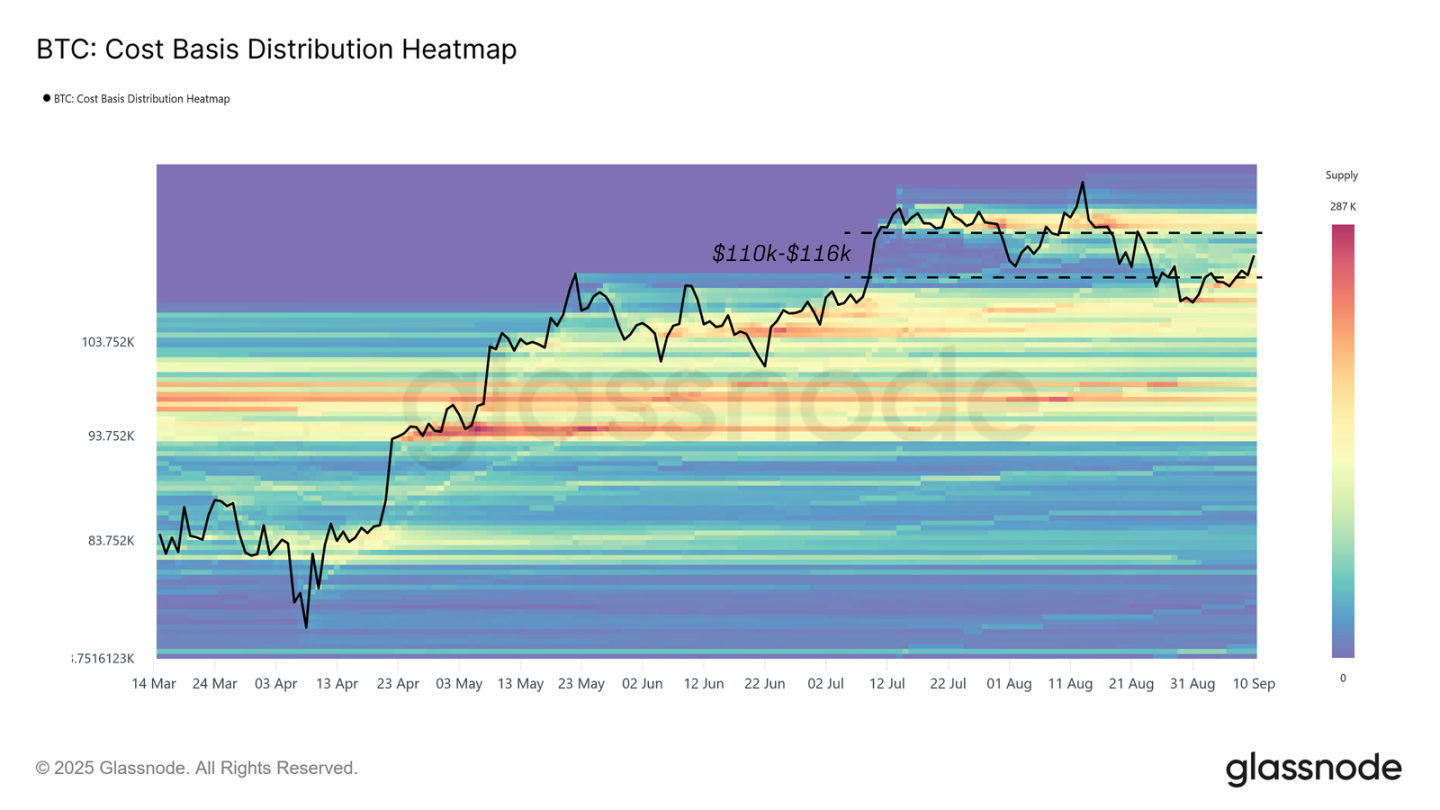
Mapping Supply Clusters
First, we map the cost basis of clusters near the current price, as these levels typically anchor short-term price movements.
According to the heatmap, there are currently three different groups of investors influencing price movements:
High buyers from the past three months, with a cost basis close to $113,800.
Dip buyers from the past month, clustered around $112,800.
Short-term holders from the past six months, with a cost basis anchored around $108,300.
These price levels define the current trading range. Recovering $113,800 would allow high buyers to return to profit and drive the bullish trend forward. However, falling below $108,300 could put short-term holders back into losses, potentially triggering new selling pressure and opening the path to the next major supply cluster's lower limit ($93,000).
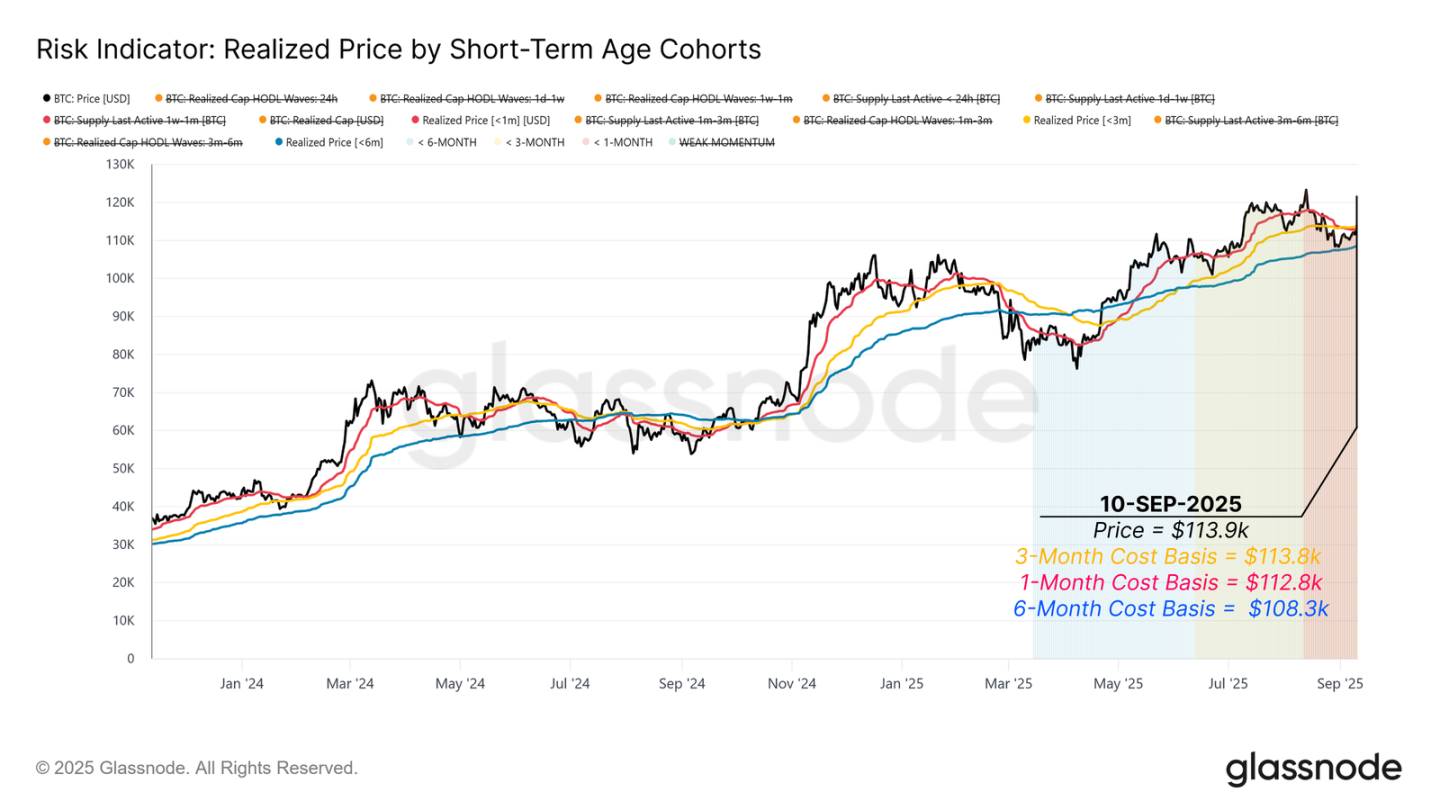
Experienced Short-Term Holders Taking Profits
After identifying the direct supply clusters shaping the range near the current price, we next examine the behavior of different holder groups during the rebound from $108,000 to $114,000.
While dip buyers provided support, the selling pressure mainly came from experienced short-term holders. The 3-6 month holder group is realizing about $189 million in profits daily, accounting for approximately 79% of all short-term holder profits. This indicates that investors who bought earlier during the decline from February to May are taking profits from the recent rebound, creating significant resistance.
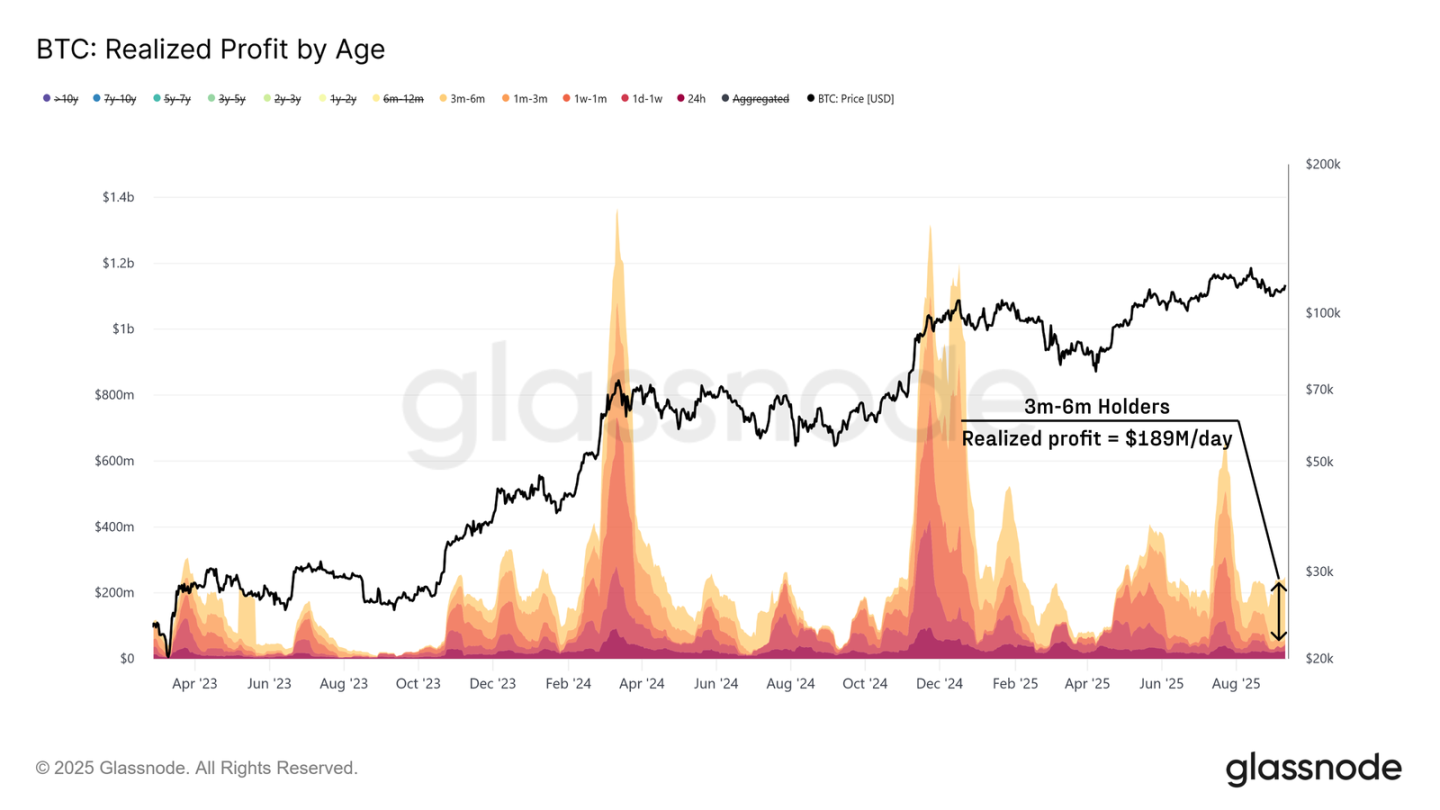
High Buyers Realizing Losses
In addition to experienced short-term investors taking profits, recent high buyers are also putting pressure on the market by realizing losses during the same rebound period.
The 3-month holder group is realizing losses of up to $152 million daily. This behavior mimics the pressure periods earlier in April 2024 and January 2025, when high buyers capitulated in a similar manner.
To restore the mid-term rebound, demand must be strong enough to absorb these losses. If the price stabilizes above $114,000, it will confirm the restoration of confidence and encourage new inflows.
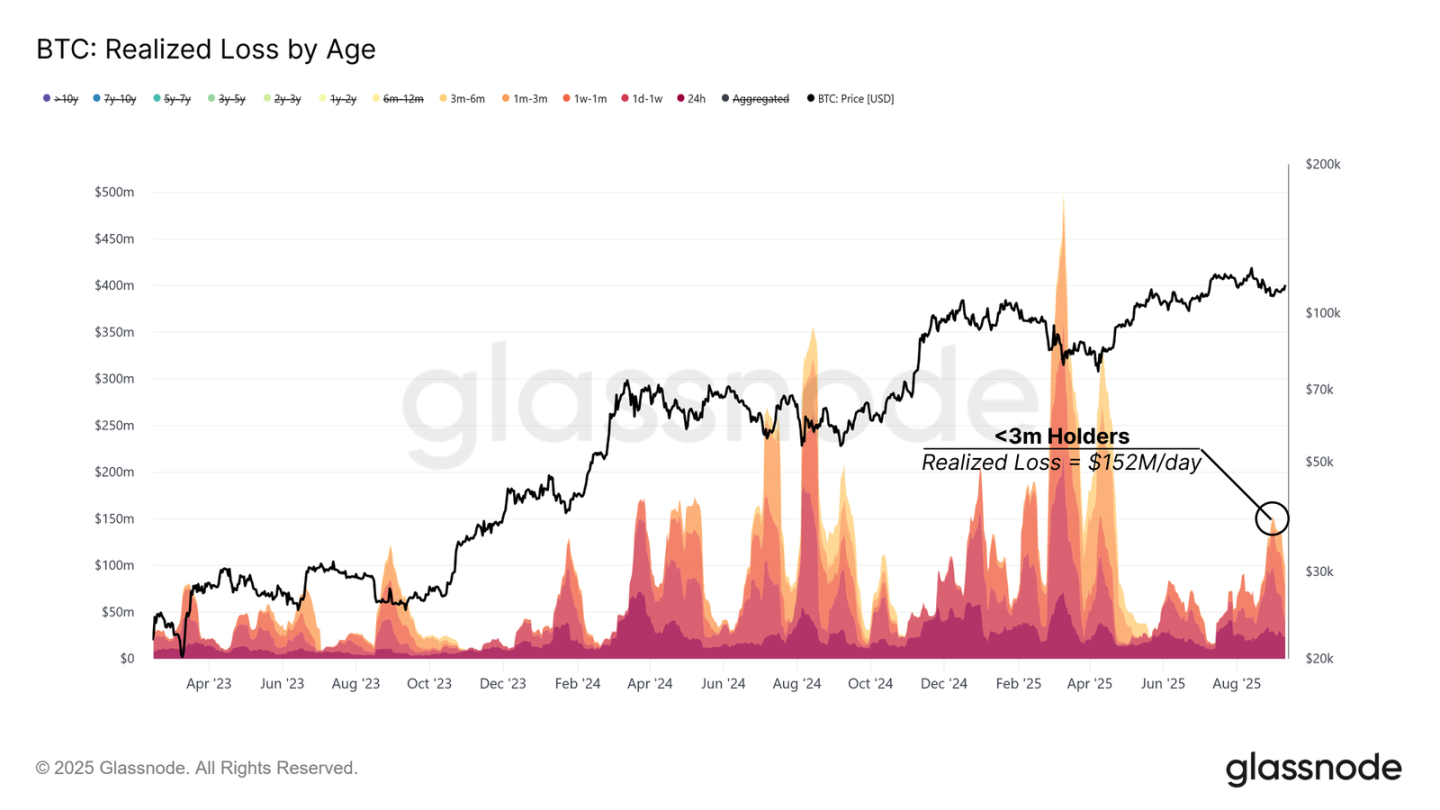
Liquidity Absorbing Selling Pressure
With profit-taking and loss realization both putting pressure on the market, the next step is to assess whether new liquidity is strong enough to absorb these sellers.
Net realized profit, expressed as a percentage of market capitalization, provides this measure. The 90-day simple moving average peaked at 0.065% during the August rebound and has since been on a downward trend. Although weaker than at the peak, the current level remains high, indicating that inflows still provide support.
As long as the price remains above $108,000, the liquidity backdrop remains constructive. However, a deeper decline could exhaust these inflows and hinder further rebounds.
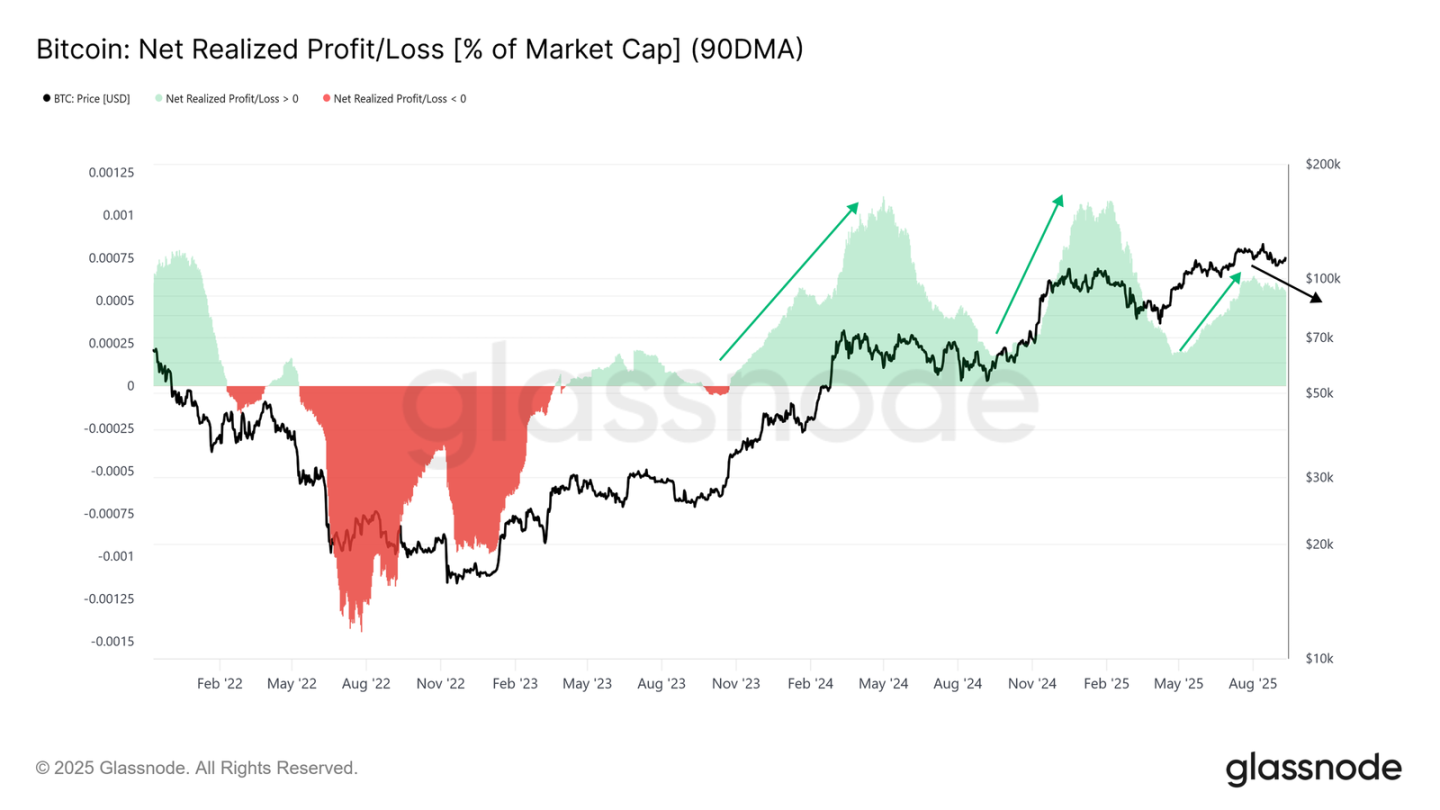
Traditional Financial Funds Losing Momentum
In addition to on-chain funds, assessing external demand through ETFs is also crucial, as ETFs have been the main driving force in this cycle.
Since early August, net inflows into U.S. spot ETFs have significantly decreased, currently hovering around ±500 BTC per day. This is far below the inflow intensity that supported the early rebounds of this cycle, highlighting the loss of momentum among traditional financial investors. Given the key role ETFs play in driving upward movements, their slowdown increases the current structure's vulnerability.
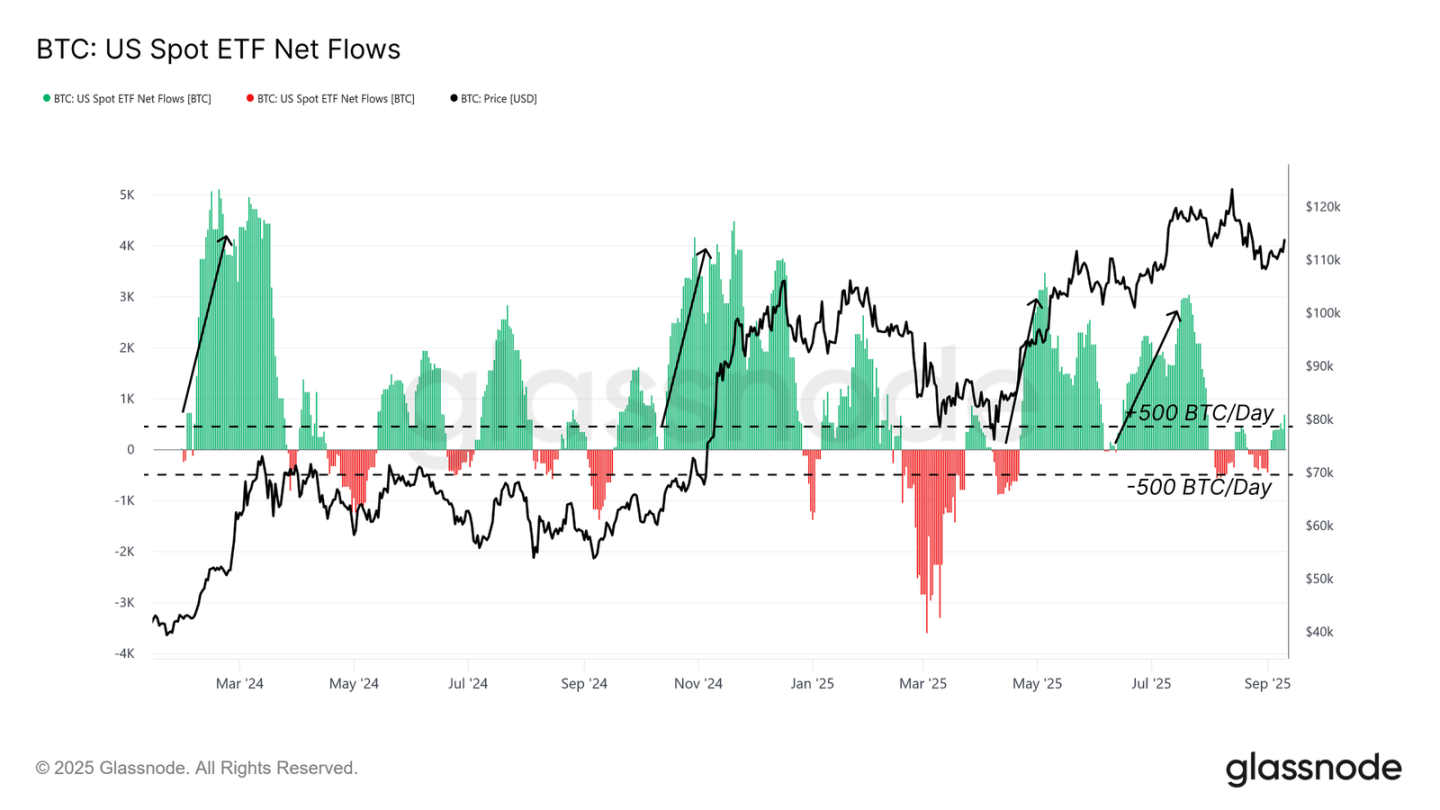
Derivatives Taking Center Stage
With on-chain liquidity weakening and ETF demand decreasing, attention is now turning to the derivatives market, which often sets the tone when spot flows weaken.
The volume delta skew, measuring the cumulative volume's deviation from its 90-day median, has recovered during the rebound from $108,000, indicating that seller strength is exhausting at exchanges like Binance and Bybit. This suggests that futures traders are helping to absorb the recent selling pressure.
Looking ahead, the evolution of derivatives positions will be crucial for navigating the market in this environment of low spot liquidity.
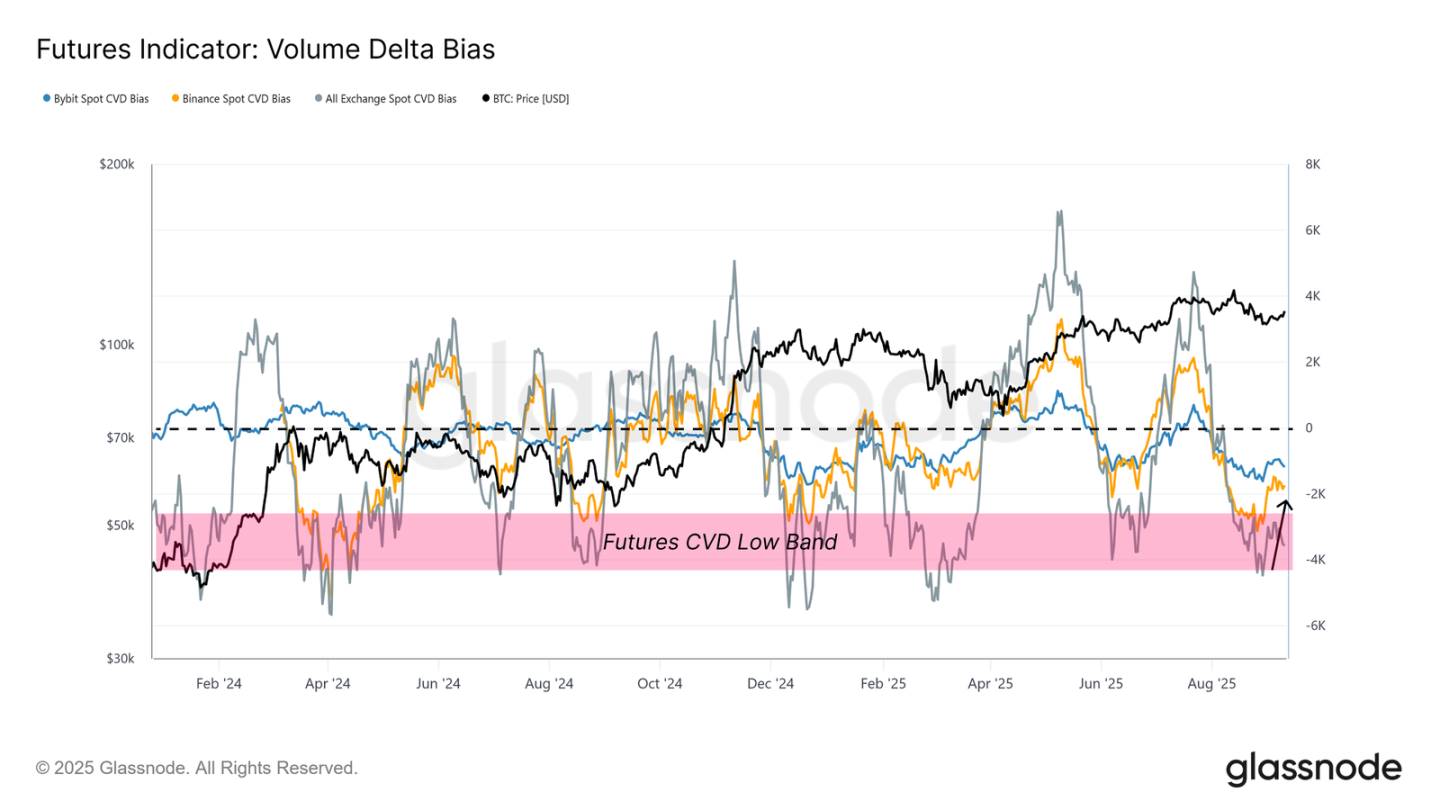
Balanced Futures Market
Delving deeper into the futures market, we find that the market appears balanced rather than overheated.
Despite higher prices, the 3-month annualized futures basis remains below 10%, reflecting stable demand for leverage without the extreme conditions typically seen before liquidations. This indicates a healthier market structure, more aligned with accumulation rather than speculation.
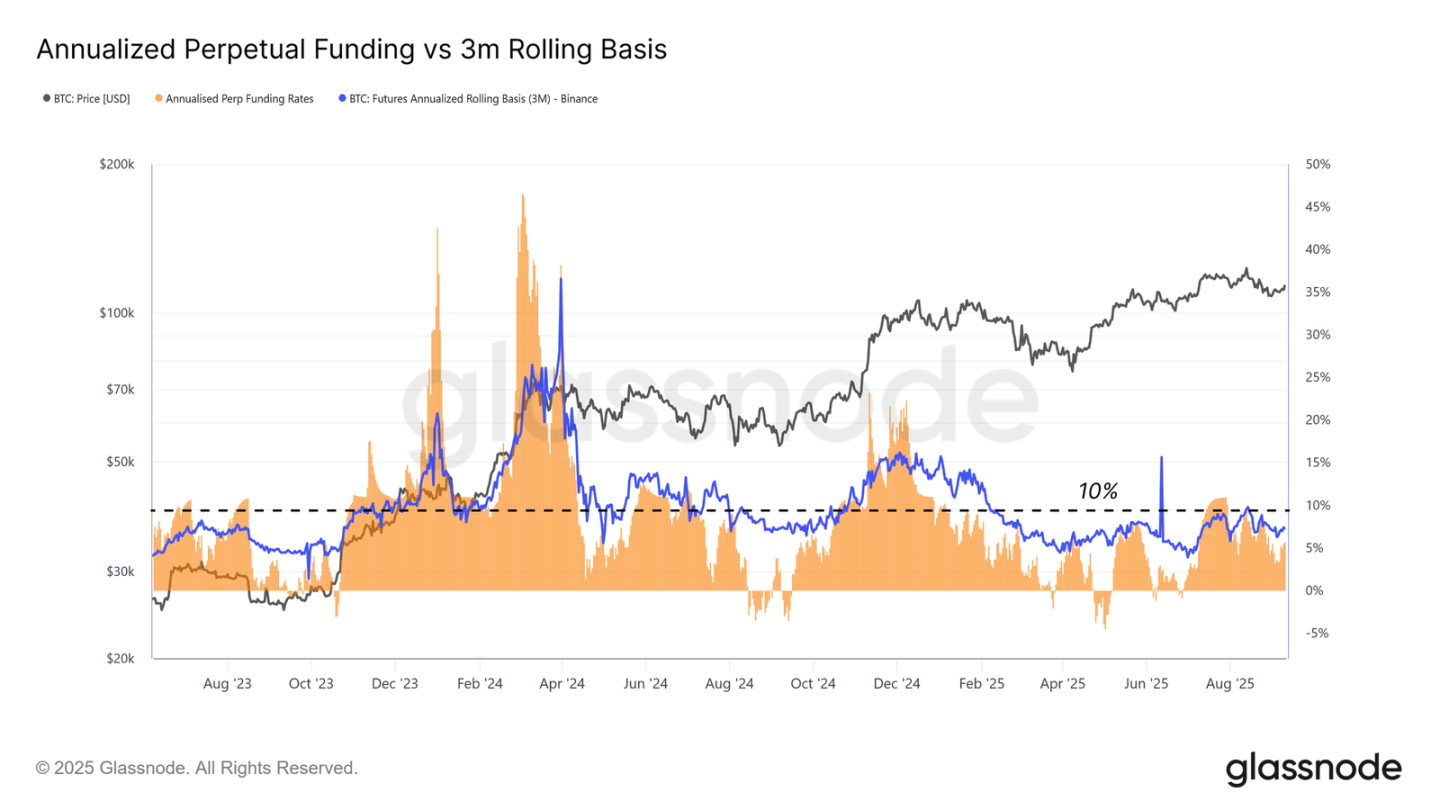
Perpetual futures trading volume also remains sluggish, consistent with the typical calm period following a frenzy. The lack of aggressive leverage spikes suggests that the rise is built on a more stable foundation rather than excessive speculation.
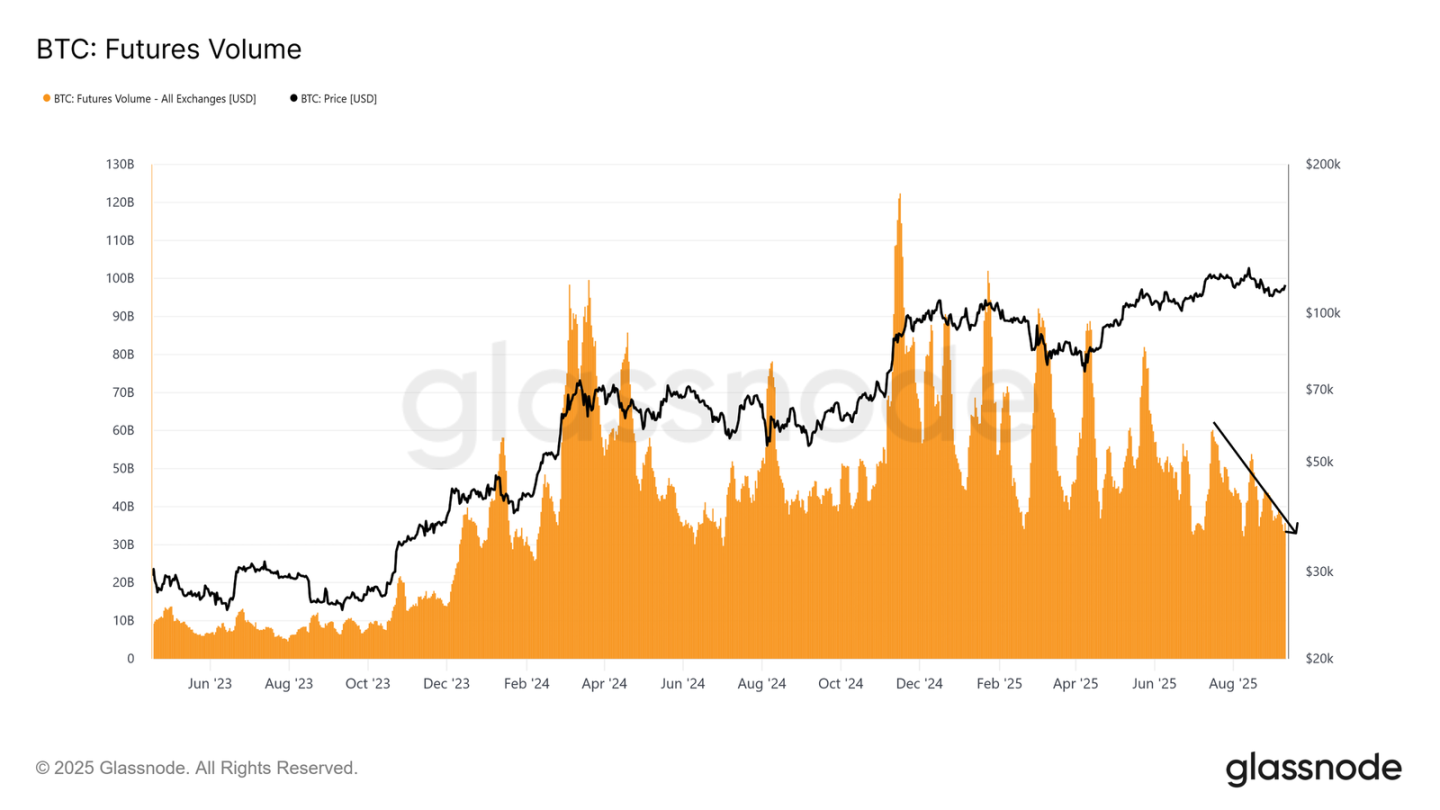
The Role of Options in Risk Management is Growing
Finally, the options market provides further insights into how participants manage risk and build positions.
The open interest in Bitcoin options has reached an all-time high, reflecting its growing importance. As ETFs provide a spot channel, many institutions prefer to use options to manage risk through protective puts, covered calls, or limited-risk strategies.
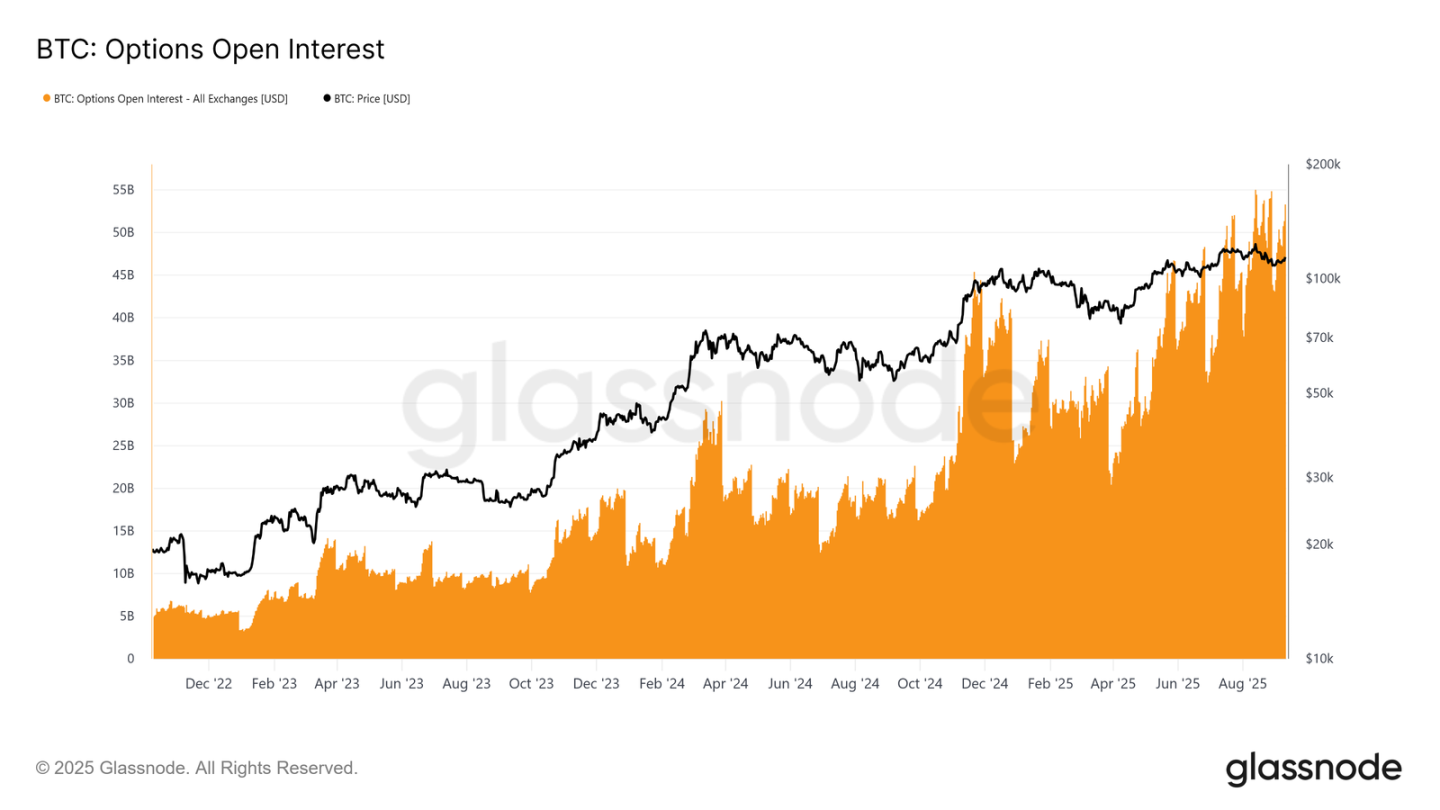
Implied volatility continues to decline, a sign of a more mature and liquid market. Volatility selling (a common traditional finance strategy) has exerted stable downward pressure on implied volatility levels, leading to more stable price movements compared to past cycles.

The composition of open interest shows a significant preference for call options over put options, especially during the top formation phase, highlighting the market's bullish bias while still managing downside risk. Overall, these dynamics indicate a healthier market structure with more risk management characteristics, which may suppress upcoming frenzies and bearish trends.
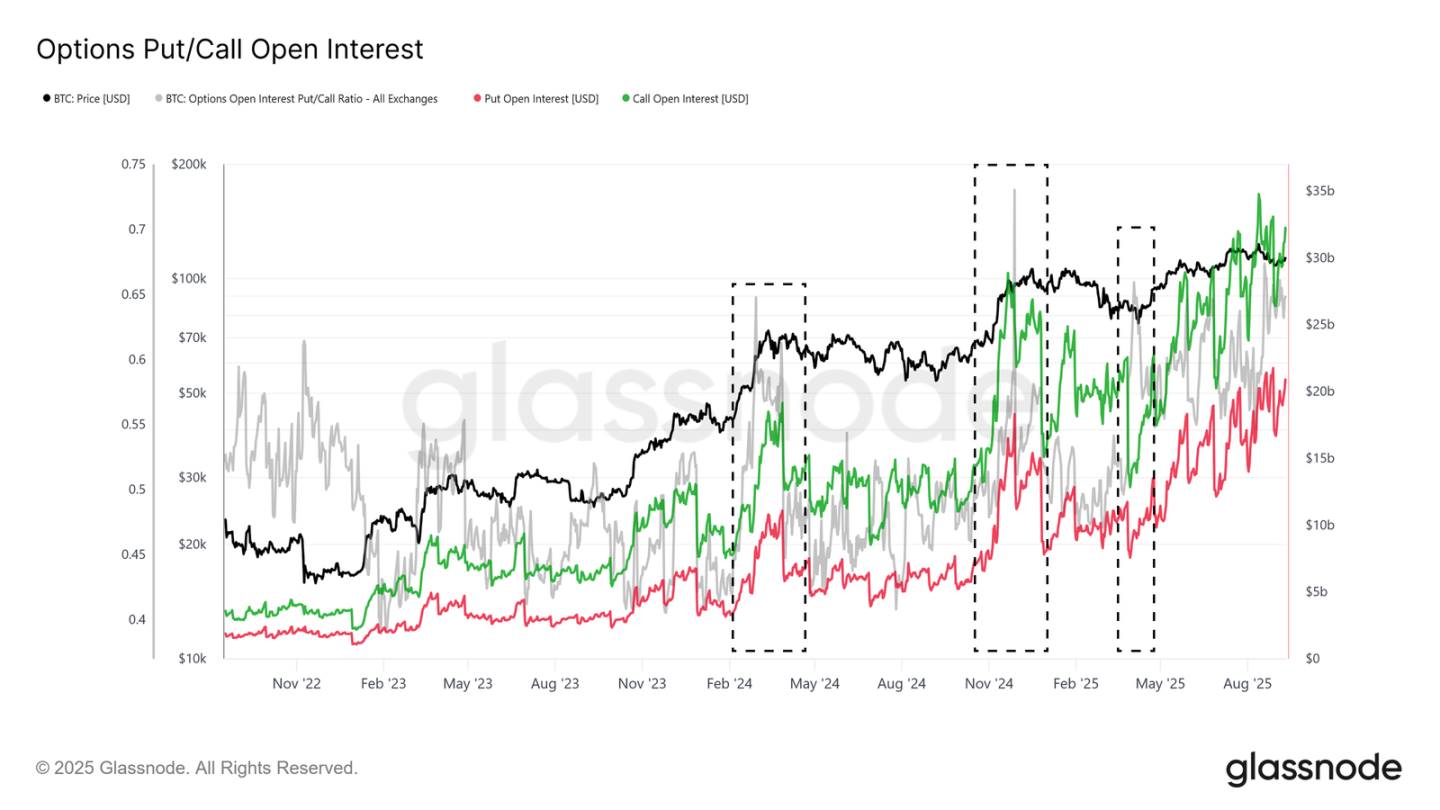
Conclusion
The current characteristics of the Bitcoin market are a delicate balance between selling pressure and weakened inflows. Profit-taking from experienced short-term holders, combined with loss realization from recent high buyers, has limited upward momentum and made the $110,000 to $116,000 range a major battleground.
On-chain liquidity remains constructive but is on a downward trend, while ETF inflows, which were once the cornerstone of this upward cycle, have lost strength. Therefore, the derivatives market has become more important, with futures and options activity helping to absorb sell-offs and influence price direction. Both the futures basis and options positions reflect a more balanced structure than in past overheated phases, indicating that the market is advancing on a more solid foundation.
Looking ahead, the ability to recover and hold above $114,000 is crucial for restoring confidence and attracting new inflows. If this cannot be achieved, short-term holders may face pressure again, with $108,000 and ultimately $93,000 being key downside levels. In short, Bitcoin is at a crossroads, with derivatives supporting the market structure, while broader demand must strengthen to drive the next sustained rebound.
免责声明:本文章仅代表作者个人观点,不代表本平台的立场和观点。本文章仅供信息分享,不构成对任何人的任何投资建议。用户与作者之间的任何争议,与本平台无关。如网页中刊载的文章或图片涉及侵权,请提供相关的权利证明和身份证明发送邮件到support@aicoin.com,本平台相关工作人员将会进行核查。




